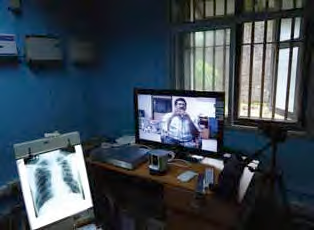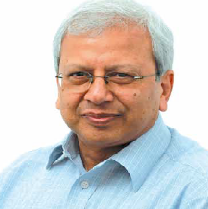How Low Can You Flow?
 Analysing the available data from the new Software 4 log on his hospitals Dr¤ger Primus machines, Dr Laws, has been able to help members of his department assess their individual performances regarding low and minimal flow anesthesia, adapt their routines and reduce their consumption of volatile gases by up to 40 percent
Analysing the available data from the new Software 4 log on his hospitals Dr¤ger Primus machines, Dr Laws, has been able to help members of his department assess their individual performances regarding low and minimal flow anesthesia, adapt their routines and reduce their consumption of volatile gases by up to 40 percent
Sunderland Royal Hospital is a 970-bedded acute hospital serving a local community of 330,000 residents in one of the cities of North East of England. David Laws received his training in medicine and anaesthesia in this region and since 2001, he has worked as a consultant anaesthetist at City Hospitals Sunderland, NHS Foundation Trust. The reduction should have impacted the patients, in terms of a better breathing circuit and gas conditioning, for his hospital, which will be required to spend less on anaesthesia agents, and for the environment, since smaller volumes of greenhouse gases will be released. Dr Laws, who has been the departments audit coordinator for the past ten years, believes that The best measure, would be to monitor the degree to which volatile anaesthesia was being wasted while administering anaesthesia, as it is both – the most costly anaesthetic component delivered and also a significant contributor to environmental pollution.
The latest Software 4 update produces a summary of each anaesthetic delivered, stating the date, time, duration and total carrier gases consumed per administration. Importantly, it also now summarises volatile agent consumption (ml liquid) and volatile agent uptake (ml liquid) for each case.
Utilising volatile ratio

Using this new parameter, Dr Laws can now calculate not only the efficiency of volatile anaesthesia by case, but also the average volatile cost per hour. The figures generated would be extremely powerful since they would be based on a very wide sample-data from the hospitals 21 operating room Primus machines. Having devised a suitable new way of demonstrating the efficiency of volatile anesthesia, Dr Laws then needed to prove its utility, make the results widely available and introduce the concept of using it as a measure of individual and departmental performance. Gaining universal acceptance for a new approach that his colleagues were likely to regard as an intrusion into their personal anaesthetic practice was always likely to be problematic. However, as Dr Laws explained, There was a need to improve our use of sevoflurane quickly as we were threatened with a significant restriction on its availability in order to reduce anesthetic department drug costs. According to Dr Laws, Whether anesthetists employed appropriate flows during anesthesia was previously regarded as a personal matter and, moreover, one that was best left unexplored.
However, when measuring the efficiency of circle breathing system used by monitoring volatile consumption, uptake ratios have proven to be an excellent method of analysing aspects of the performance of the anesthetic department and individuals within that department. We have achieved a significant reduction in volatile drug costs with an enhancement in the quality of patient care assisted by the objective data that can be derived from the Dr¤ger Primus anesthetic machine logbook.

post_id:
uld_count:
Cookie not set
Value 1: 0
Value 2: 10















